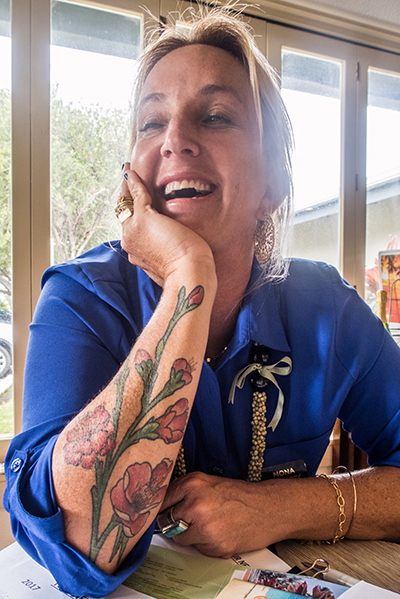This phrase was tattooed on the chest of Lyle Tuttle, who was once called “the granddaddy of modern tattooing.” Mr. Tuttle died on Monday, March 25th, at the age of 87. I learned about this in an article published on March 30, 2019, in the San Francisco Chronicle. During a 2002 interview for the Chronicle, Mr. Tuttle said, “show me a man with a tattoo and I’ll show you a man with an interesting past” (he was quoting Jack London). I do not think that a person with “an interesting past” needs a tattoo. I do not have one. For me, the reason is very simple – Why to have any markings on my body, which cannot be seen or changed? Judaism prohibits tattooing for a number of reasons mentioned in an interesting article online titled “Tattooing in Jewish Law”. Nevertheless, it was Lew the Jew from New York who at the beginning of the 20thcentury became one of the most influential tattoo artists in the United States. I recently checked out a current exhibit about him and other Jewish tattoo artists in the early 20thcentury at the San Francisco Jewish Museum. Tattooing has been practiced across the globe since at least the Neolithic times, which began about 12,000 years ago. Despite the fact that I would not get a tattoo on my body, it is very popular, especially among young people, and I have a story (titled Tattoo) in my next photo-story book “42 Encounters with the Pairs in San Francisco”.
The text in my upcoming book is based on one word, which corresponds with the image. One of them is of a man and woman who are both tattooed. I will leave the suspense of seeing the image, but will share the story:
TATTOO
It was Captain James Cook’s voyages to the South Pacific that imported the Polynesian word tatau, which was later changed to tattoo. Tattooing existed in many parts of the world, dating back to approximately 6000 BC.
Different countries had different purposes or reasons for the painful adornments of their countrymen’s bodies. In ancient China, bandits and folk heroes were known to sport tattoos. In Egypt, women displayed the majority of tattoos, and the markings often indicated status. In the Philippines, native groups also used tattoos as a sign of rank or power. During the Christianization of Europe, tattoos were considered elements of paganism and were prohibited. In Japan, they served for spiritual and decorative purposes but also were used for criminals as punishment. The Japanese mafia, the Yakuza, who are the descendants of the Samurai, used tattoos as a sign of belonging to a specific group. The native people from the Ohlomes and Miwoks tribes, who settled in the San Francisco Bay around 4500 to 5000 years ago, tattooed both men and women. In the modern Western world, tattoos have become very popular for a variety of reasons: memories, art, love and passion or just as a fashion trend.
P.S. These four images attest to how tattooing has become popular among some women. I encountered a dog owner in Fort Funston with a dog tattoo on her arm, of her deceased best friend. One of the images in the book “42 Encounters with Dog Lovers” came from our trips here with Max. You can buy the book on Amazon.com.
Enjoy and Share.





